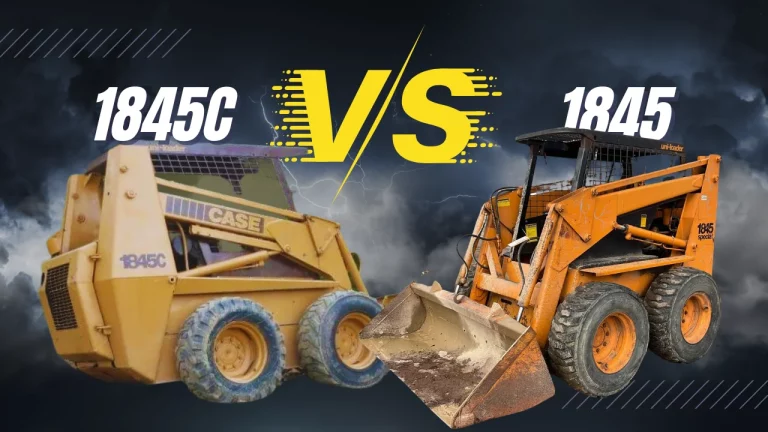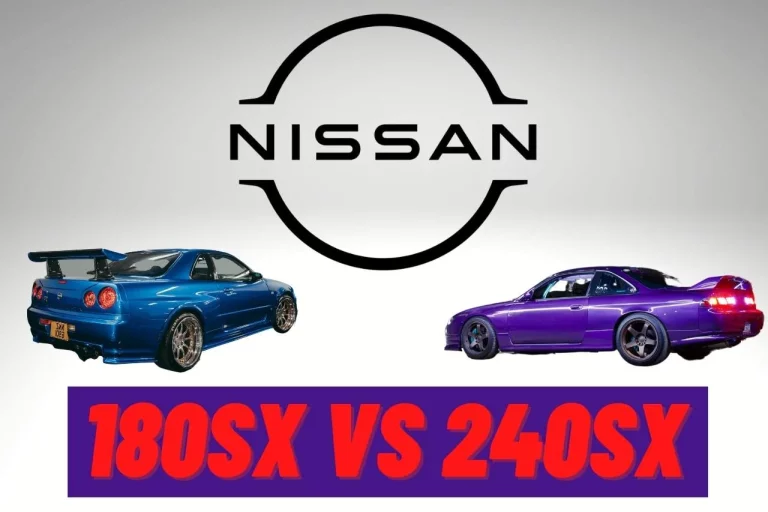Differences Between CAT 3406B and 3406C Engines
CAT’s 3406B and 3406C engines stand as icons in the world of diesel powerhouses, each with distinct characteristics and capabilities.
🌟 Today, we embark on a journey to uncover the key differences between these legendary models. 🛠️ From mechanical simplicity to electronic evolution, we’ll explore how these engines have shaped the diesel engine landscape.
💡 Join us as we delve into performance, efficiency, adaptability, and compatibility, empowering you to make informed decisions for your diesel engine needs.
Let’s unravel the mysteries and unlock the full potential of CAT’s iconic engines together! 🔍
Comparison Table CAT 3406B Vs 3406C
Here’s a detailed comparison table highlighting the key differences between the CAT 3406B and 3406C engines:
| Feature | CAT 3406B | CAT 3406C |
|---|---|---|
| Engine Type | Mechanical | Electronic |
| Fuel System | Mechanical injection | Electronic injection |
| Performance | Reliable and robust | Enhanced performance and efficiency |
| Fuel Efficiency | Moderate | Improved with electronic controls |
| Emissions Control | Basic | Enhanced with electronic controls |
| Adaptability | Versatile for aftermarket modifications | Requires specialized knowledge |
| Maintenance | Simpler, fewer electronic components | Requires electronic diagnostics |
| Upgrades | Limited by mechanical design | Potential for electronic performance mods |
| Throttle Control | Mechanical linkage | Electronic throttle control available |
| Turbocharger Compatibility | Traditional turbos | Modern turbos may require modifications |
| Engine Control | Mechanical governor | Electronic engine control module (ECM) |
| Head Design | Square port head | Round port head |
| Cooling System | Traditional cooling setup | Improved cooling efficiency |
| Maintenance Cost | Generally lower | Can be higher due to electronic components |
| Reliability | Known for durability and longevity | Relies on electronic components |
Engine Specifications 🛠️
Overview of the 3406B Engine
- Power Output: Ranges from 300 to 550 horsepower, known for reliability.
- Torque Capacity: Strong and dependable for heavy-duty tasks.
- Fuel System: Utilizes mechanical system, ensuring consistent fuel delivery.
- Cooling System: Robust design maintains optimal temperatures under load.
- Compression Ratio: Varied to optimize performance and efficiency.
Overview of the 3406C Engine
- Power Output: Offers 400 to 600 horsepower, ideal for demanding applications.
- Torque Capacity: Provides superior pulling power and torque.
- Fuel System: Features electronic injection for precise fuel delivery and emissions control.
- Cooling System: Incorporates advanced components for efficient heat dissipation.
- Compression Ratio: Optimized to enhance performance and fuel economy.
Performance and Efficiency 🔥
Power Output Comparison
- 3406C engine outperforms 3406B, delivering more horsepower for increased productivity.
Torque Capacity Comparison
- 3406C engine boasts higher torque capacity, ensuring better performance under heavy loads.
Fuel Efficiency Differences
- 3406C’s electronic fuel injection system enhances efficiency and emissions control compared to 3406B’s mechanical system.
Impact of Engine Design
- 3406C’s advanced design results in superior performance and efficiency compared to 3406B, offering enhanced reliability and productivity.
Design and Technology 💡
Key Features of the 3406B Engine
- Cylinder Block and Head: Built for durability and longevity.
- Turbocharging System: Provides reliable power boost when needed.
- Injection System: Ensures precise fuel delivery for optimal combustion.
- Cooling System Design: Effectively dissipates heat to maintain engine health.
Key Features of the 3406C Engine
- Cylinder Block and Head: Enhanced design for improved performance and longevity.
- Turbocharging System: Optimized airflow for increased power output.
- Injection System: Electronically controlled for precise fuel management.
- Cooling System Design: Efficient heat management to prevent overheating and maintain performance.
Applications and Uses 🚚
Industries and Sectors for the 3406B Engine
- Construction: Commonly used in heavy construction equipment.
- Mining: Reliable power for mining machinery and equipment.
- Transportation: Found in trucks, buses, and other transportation vehicles.
- Agriculture: Powering agricultural machinery and equipment.
Industries and Sectors for the 3406C Engine
- Oil & Gas: Ideal for powering drilling rigs and oilfield equipment.
- Marine: Used in marine vessels such as boats and ships.
- Power Generation: Providing reliable power for generators and backup systems.
- Industrial: Versatile engine for various industrial applications.
Specific Applications for Each Engine Model
- 3406B: Well-suited for stationary power generation and heavy-duty trucks.
- 3406C: Preferred choice for marine propulsion, oilfield equipment, and power generation in remote areas.
Maintenance and Service 🔧
Similarities in Maintenance Requirements
- Both engines require regular oil changes, filter replacements, and routine inspections.
- Periodic checks of fuel and cooling systems are essential for optimal performance.
Unique Maintenance Requirements
- 3406C may require additional electronic system diagnostics and updates.
- 3406B may need more frequent adjustments to mechanical components.
Parts and Service Availability
- Parts and service for both engine models are widely available through authorized dealers and distributors.
- Service networks ensure prompt maintenance and repairs, minimizing downtime for operators.
Cost and Value 💰
Price Comparison
- 3406B engines generally have a lower initial purchase cost compared to 3406C due to simpler technology.
- 3406C engines may have a higher upfront cost but offer advanced features and performance benefits.
Factors Influencing Cost
- Engine condition, mileage, and age affect the price of both 3406B and 3406C engines.
- Availability of aftermarket parts and service can impact long-term maintenance costs.
Value Proposition
- Choosing between models depends on specific application requirements, performance expectations, and budget considerations.
- Assessing long-term reliability, fuel efficiency, and maintenance costs helps determine the overall value of each engine model.
Mechanical and Non-Mechanical Upgrades 🛠️🔩
Upgrading your CAT 3406B or 3406C engine can unlock its full potential. Here’s what you need to know:
- Common Upgrades: Turbocharger enhancements, fuel system modifications, and ECU tuning can significantly boost performance.
- Selecting the Right Upgrades: Ensure compatibility and maximize performance by choosing upgrades tailored to your specific engine model and application.
Aftercooler vs Charge Air Cooler ❄️🔥
Understanding the cooling systems of CAT engines is vital. Here’s the breakdown:
- Aftercooler: Utilizes coolant to lower intake air temperatures, improving engine performance and efficiency.
- Charge Air Cooler: Uses ambient air to cool compressed air before it enters the engine, enhancing cooling efficiency.





